Late in 1915, when Winston Churchill was First Sea Lord, he was invited by the War Office to a secret viewing on Horse Guards Parade of Holts caterpillar-tracked mechanised vehicles, overcoming surface obstacles. The makers thought this could be a means to enable the Army to break out of the quickly-established static trench system stalemate on the Western Front by that time, and to help reduce the heavy casualties being experienced.
The first vehicle was nicknamed "Little Willie" (weighing 14 tonnes) & built by Fosters of Lincoln, which motored on 8 September 1915. 'Tank' was the term chosen by December 1915 for this new weapon as from a distance it resembled a steel water tank, and of course for security cover, and not 'Landship' or 'Cruiser', as the Navy had proposed after a group was formed by Churchill in February 1915, known as the "Landship Committee" to oversee development by the Navy and then jointly by the Navy and Army. A final specification was given late September known as "Big Willie", later "Mother" (weighing 30 tonnes — also built by Foster's). "Little and "Big Willie" underwent trials at Hatfield Park (next to the golf course) on 29 January and 2 February 1916 at the invitation of the Marquis of Salisbury, and obstacle groundwork (on the surface and 4 types of trenchworks) was undertaken by 3rd (Mid Herts) Battalion, Herts Volunteer Regiment and a Company of War Office Engineers, plus a detachment from 20 Squadron, Royal Naval Air Service — clearly illustrating the importance of Hertfordshire in the tank's history. On 8 February 1916, His Majesty King George V visited Hatfield for a special demonstration, and he also took the opportunity to be driven around in a tank and was very supportive of the project. At the same time, Colonel Winston Spencer Churchill of the 6th Royal Scots Fusiliers, now serving with the B.E.F. in France, was kept informed of developments (having left politics at this period, following the tragic failure of the Gallipoli Campaign!)
On 12 February 1916, an order was placed for 100 production "Mother" types — known as the Mark I (now weighing 28 tonnes) — later 150. The first Tank Training Centre was established at Thetford, Norfolk and later moved to a main centre at Bovington, Dorset (now the home of the National Tank Museum). By 30 August, the first 50 tanks had been delivered to France — either 'Male' or 'Female'. The former initially had two 6-pounder naval cannons and six Hotchkiss machine guns and the other had four Vickers MGs, plus a Hotchkiss — both with 8 crew members. The first use of tanks on a battlefield was at the Battle of Flers-Courcelette on 15 September 1916 with only 32 tanks engaged — many broke down but around 10 burst through the German Lines. Unfortunately, the attack was not followed up (they had been rushed into combat too early, despite Churchill's and others' wishes, but had proved their value as capable of crossing trenches or craters (9 ft across) and driving through barbed wire for infantry to follow). After the 1916 Battle of the Somme (7–11/1916), Field Marshall Douglas Haig ordered 1,000 Mk IV and Mk V tanks. At the Battle of Cambrai in September 1917, the Tank Corps made an unprecedented breakthrough with 378 engaged, but here again it was not fully followed up, relying in this case solely on the Cavalry!
Many of the 'Presentation Tanks' (265) brought back from Flanders & France, to raise money for the War Effort and bereaved families plus injured troops, were erroneously described as German tanks, having their black iron cross painted on the sides — however, these were recovered British tanks that had been captured or recovered after breaking down — some 77 intoto (the German Army had put c 50 Tanks back into active service, against the B.E.F., by the time of the Armistice — having refitted with their own Armaments!) The Germans did develop a Tank, the huge A7V (see images at end of paper), but this proved too unstable on rough unlevel ground and only 20 were built, with no impact on the Allies (the Presentation Tank given to Hatfield House was donated to the National Tank Museum).
One of the first excellent publications, just after the Great War ended, was by Lt Col Albert G. Stern of the Tank Corps — "Tanks 1914 to 1918: The log book of a Pioneer" (1919) — including full specifications for the British Mark I.
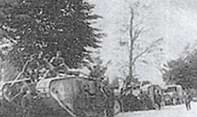
German forces using | 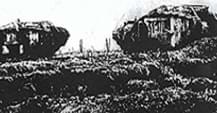
Mark IVs near Cambrai, likely | 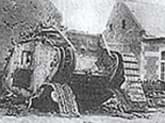
Mark IV destroyed by the Germans | |||
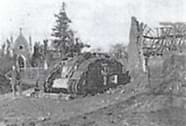
German captured Mark IV | 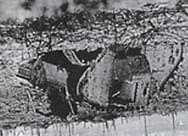
A destroyed Mark IV | 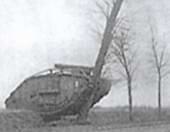
Germans testing a Mark IV | |||

Female Mark IV | |||||

|

|
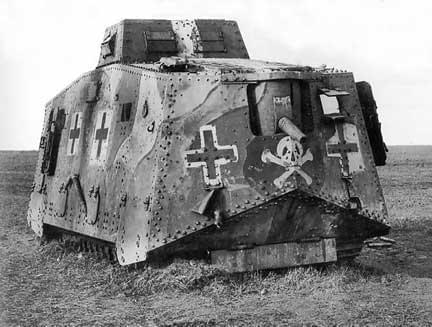
Weighing 31.5 tons and with the complement of 18 crew
| | ||